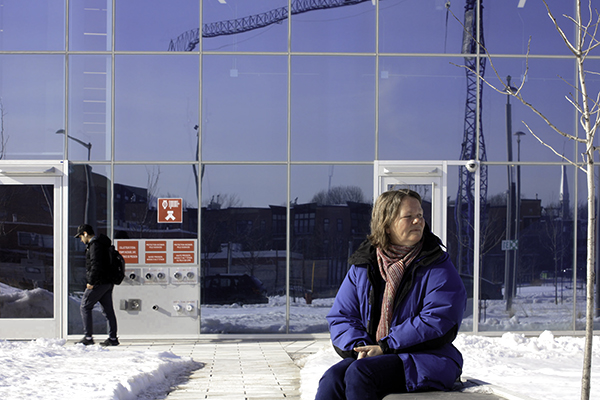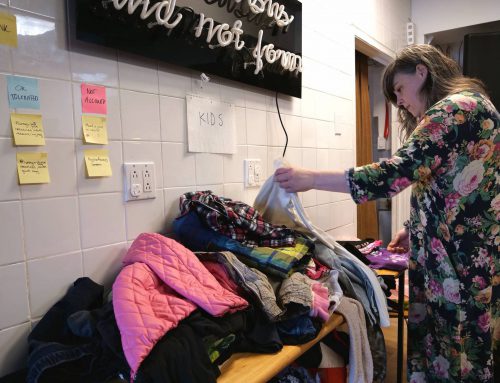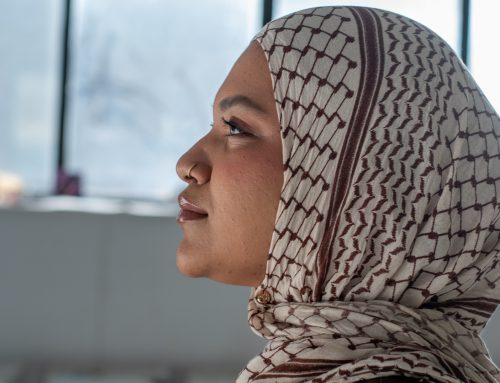BY Ireland Compton & Erica Rizzo
Living in Parc-Extension, Mary Antico is a single mother of two boys who has experienced the effects of gentrification first-hand.
“I got displaced from my home,” she says. “I had been in an apartment for seven years and got a repossession notice from a new landlord who had bought the building for the purposes of their family… It was very destabilizing for me.”
She was able to find another apartment in the neighbourhood, but many aren’t so lucky. Montreal’s vacancy rate is at its lowest level in 15 years.
That causes extra problems for low-income neighbourhoods that have a history of difficult tenant-owner relations.
“Many had negligent landlords who didn’t take care of problems around cockroaches, bed bugs, mice in the apartment, mold, water leaking, and things like that,” says Amy Darwish of the Comité d’action de Parc-Extension (CAPE).
Darwish points to new gentrification pressure brought on by the opening of the University of Montreal’s MIL campus, a $350 million science campus that borders the neighbourhood and two others.
Université de Montréal’s new science campus borders Parc-Extension, Outremont and Mile-Ex. Media by Ireland Compton.
With its shiny glass exterior and modern feel, the new campus has brought an influx of students who will need access to housing, study spaces, and places to wind down after a long day of classes.
When these amenities are built to cater to students, the cost of rent in the area will rise with property values, creating a housing market that is no longer affordable to many of the families and individuals who call it home.
According to the CMHC, rents in Villeray-Saint-Michel-Parc-Extension rose 3.8 per cent in 2019.
Gentrification is not a new phenomenon in Montreal. Recently, it has been affecting residents in Park-Extension. Video by Erika Rizzo.
“Increasingly we’ve been seeing tenants coming in, either because their landlord is trying to force [them out] through abusive rent hikes, the landlord is trying to take back the apartment, or because they’re trying to evict them in order to re-rent the apartment to students or professionals,” says Darwish.
While tenants have the option of fighting for better upkeep, they must file a complaint with the Régie du logement, which can be a lengthy process. Not to mention, many who live in the area do not know their rights as tenants, or cannot read or write well enough in French or English to put forth their grievances.
“Last July first was actually a really difficult one, entire families found themselves homeless as of July first,” says Darwish. “We’re calling for immediate action to avoid that happening again this year.”
According to a document compiled by the Parc-Ex Anti-Eviction Mapping Project, 43 per cent of the population lives below the poverty line and one-third live in substandard housing.
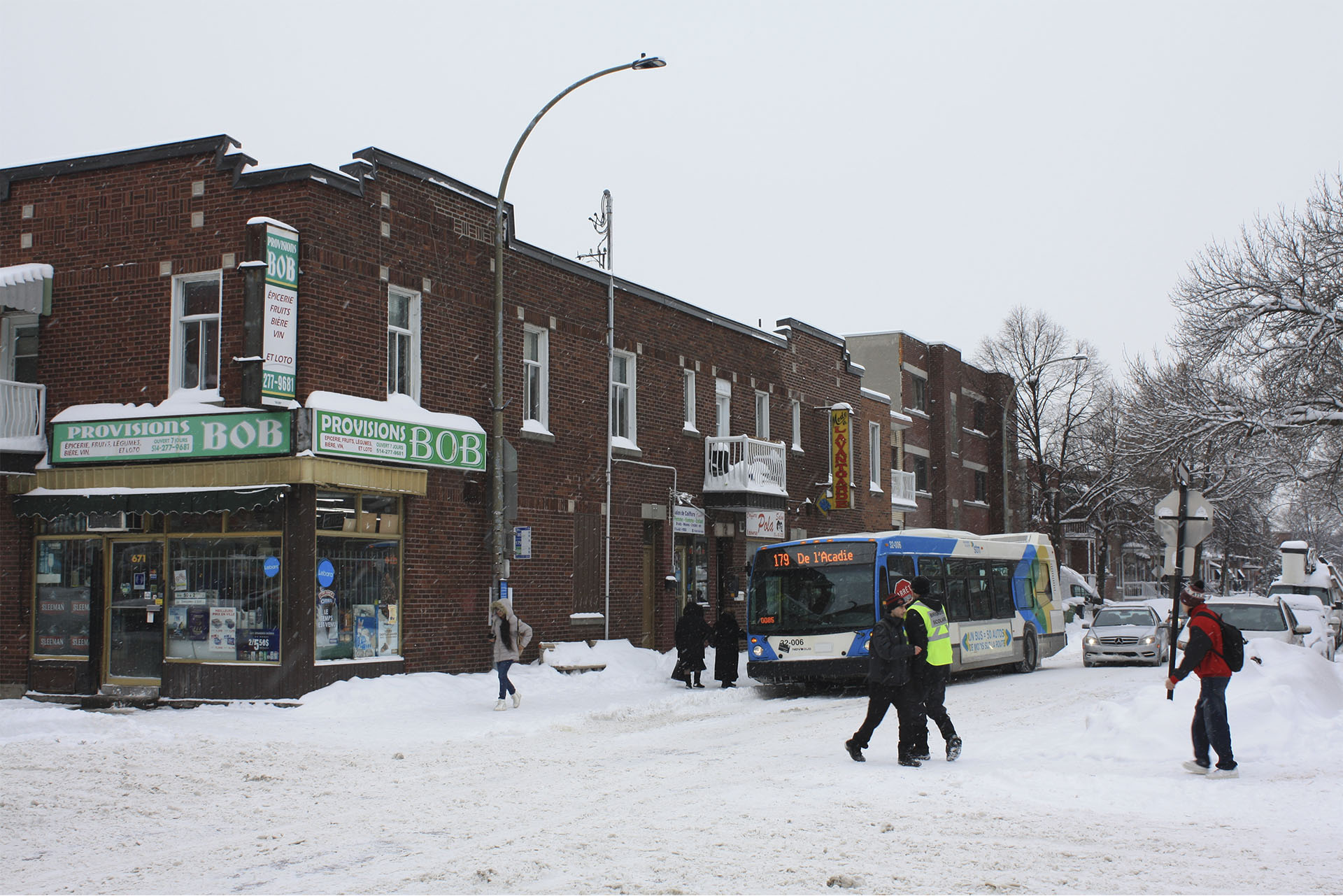
Residents crossing the street in Parc-Ex neighbourhood on a snowy morning. Photo by Erica Rizzo.
Darwish says the city has failed to deliver on Mayor Valerie Plante’s promises to provide adequate affordable housing units, and this new campus and the wealthy students and condo developers it’s brought with it, could cause longtime Parc-Extension residents to be pushed out.
In response, a number of community organizations have cropped up to fight gentrification in the neighbourhood and provide resources to individuals and families struggling to make ends meet and find affordable housing.
Architect Miguel Escobar, of Future Cities Group, says that there’s not much to be done about gentrification itself.
“[This] is something you will never, ever be able to control. That is offer and demand,” he says. “It’s inevitable that that’s going to happen, so the city has to find ways of finding alternatives for people that need housing. They’re not going to be able to stop developers buying certain properties and a demand going up for those areas.
“We’ve seen it in Griffintown. Griffintown was dead forever, and all of a sudden it’s become one of the hottest places in Montreal, because of the creation of demand by the developers.”
However, city officials say they’re aware of the problems that are caused by rapid development.
“One thing that’s really worrying for us is the cost of housing,” says Craig Sauvé, the member of Montreal’s Executive Committee in charge of housing. “That’s what’s at the crux of people talking about gentrification — the cost of housing. Across the city it’s been going up way too rapidly.”
Community groups in St-Henri came together to demonstrate against gentrification in the area, demanding space along Notre-Dame Street to be used as a community meeting place, during a protest in 2016.
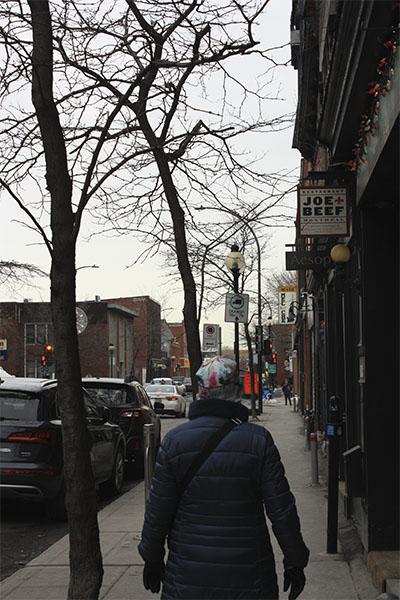
Strip of stores along a street located near Atwater market, not too far from St. Henri. This area has gradually added in trendy stores and restaurants among older establishments. Photo by Erica Rizzo.
Currently, development in the city of Montreal operates on a system in which 20 per cent of developments must be affordable housing, 20 per cent social housing, and now, the Plante administration is introducing an additional requirement for 10 to 20 per cent to be family-size housing.
The problem, says Escobar, is that this additional quota strangles profits for developers, so there is no incentive to build. He says, Montreal needs to sit at the table with developers to work out a solution.
“The main problem right now is this lack of communication,” he says.
According to Sauvé, the city has a strategy to build 12,000 affordable housing units. But it will take time and some help from other levels of government.
“We promised 12,000 units, and mid-mandate we had already attained 52 per cent,” he says. “We think we’re going to hit our target. But the city can’t do all the heavy lifting on its own.”
The Liberal government has previously had two budgets where they cut spending on social housing in half.
“The federal government has been disengaged in social housing since the Chrétien years, where they decided, ‘We’re not investing anymore,’ […] until Justin Trudeau wanted to have a housing strategy, but in Quebec you need to have a certain agreement with the federal government before money starts pouring out,” Sauvé says. “That agreement has not been signed so we’ve seen no money yet. We need our other governmental counterparts to do the work.”
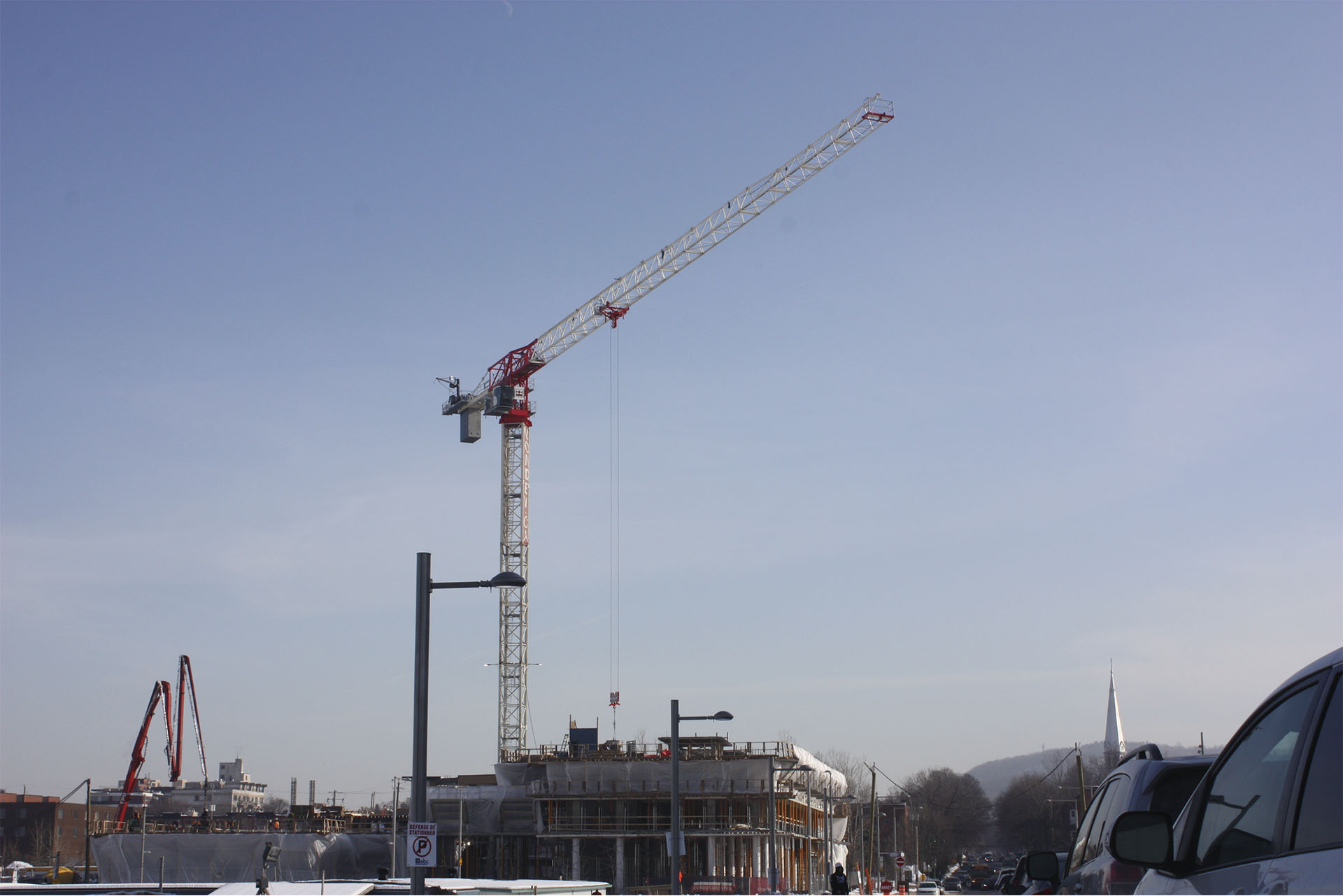
View from behind new Université de Montréal’s new campus. The building is located in front of a new construction site that is building luxury housing. Photo by Erica Rizzo.
No matter how quickly new low-cost housing units are built, they likely won’t keep up with demand around the new campus. The University plans to erect more buildings on the site over the next decade, and it could eventually house up to 15,000 students.
